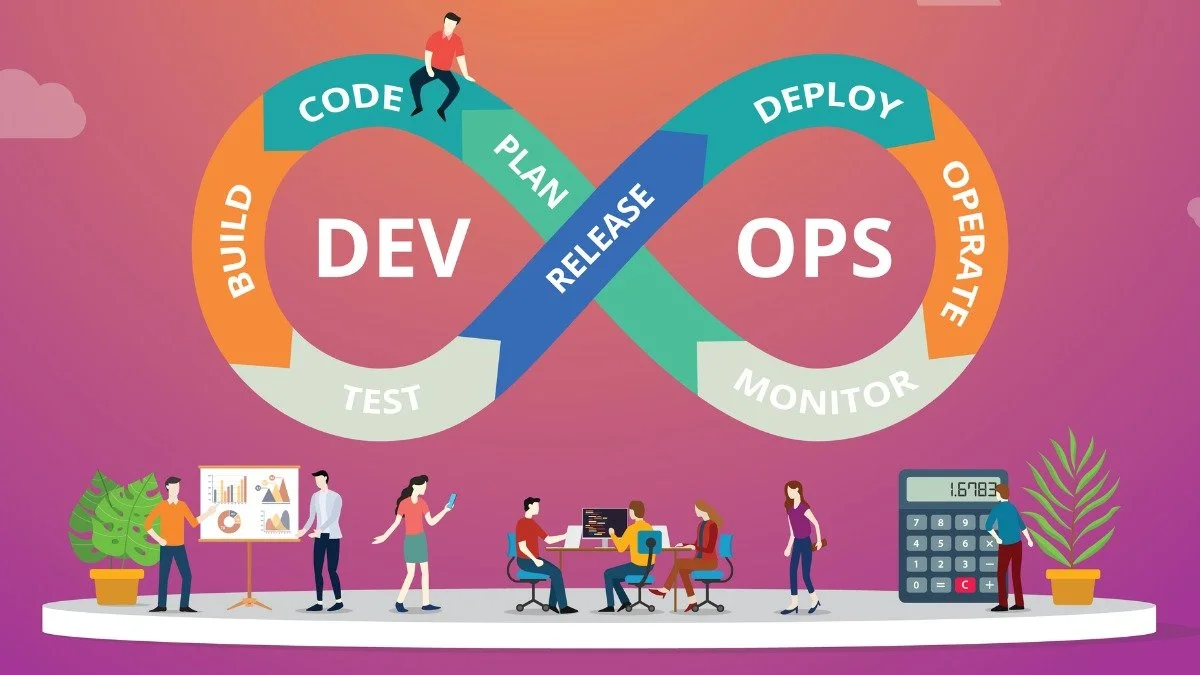Top DevOps trends to look forward to in 2022
This blog will showcase all the DevOps trends that will be the highlight of 2022 and beyond.
The DevOps market is massive and still growing. DevOps has become a bigger priority for businesses and their clients than ever before. It is a critical methodology focusing on pushing things forward (including regular deliveries), triggering innovations, and overcoming any challenges between businesses' and clients' requirements.
When it comes to digital transformation, it is essentially the evolution of software technology designed to bring us closer to the future. Furthermore, all efforts to improve technology aim to usher into a future of convenience and reveal something previously unknown.
DevOps has proven to be one such gift for the tech industry, particularly for developers and enterprises that rely significantly on IT innovation.
What is DevOps?
The phrase "DevOps" is formed by combining the terms "development" and "operations." It refers to a collaborative or shared framework of the work performed by an organization's application development and IT operations teams. In its broadest sense, DevOps is a paradigm that promotes better communication and collaboration across these teams and others within a company.
Key DevOps Trends to look forward to in 2022
1. Edge Computing
Edge computing aids firms in reaching DevOps objectives of performance and accuracy, quickly responding to difficulties, and providing better adaptability to people. During the epidemic, corporations used Cloud and DevOps techniques to advance their businesses in 2021, which accelerated a vertical edge computing pattern. This pattern is expected to continue in 2022.
2. Low-Code Application
Many firms have turned to low-code amid the pandemic to develop and deploy applications quickly. Due to the low-code methodology's increased productivity, the shift to low-code software is predicted to gain pace by the end of 2022. DevOps engineers are expected to follow this trend, leveraging low-code tools with handy drag-and-drop elements.
Low-code adoption is projected to cover the entire software development cycle as it matures. It will help with app ideation, software design, code development, testing, release management, documentation, and more.
3. AI Infusion
Artificial intelligence (AI) has already altered the way companies work. It is now expected to propel the DevOps ecosystem forward by streamlining and expediting every stage of the SDLC. The incorporation of AI helps enterprises to integrate complete automation into DevOps. This feature removes or diminishes human intervention in code modifications through deployment processes
4. Integration of DevOps and Agile
Though it is expected that DevOps will eventually supersede agile, the future will see Agile and DevOps work in tandem. This is because both of these aspects of technology can fill in each other's shortcomings, paving the way for a more evolved world.
DevOps teams could provide more value to the project by allowing quality to flow into the products since Agile can even help testers drive speed into the project. Furthermore, the technique may help improve testers' collaborative competencies while fostering a culture that allows for a broader scope of production supported by faster communication.
5. Automation
As evolution is all about seeking change, anything linked to DevOps and Quality Assurance must meet the new demands. Each phase defines specific new updates, especially when it comes to ongoing evolution. Working on DevOps and Quality Assurance, on the other hand, requires developers to maintain a steady focus on learning the methodology and practice multitasking, and the only way to avoid all of this stress is to use automation.
Overall, automation testing solutions aim to emphasize tricky tasks while leaving the challenging tasks to automation. Automation is the only way to meet the needs of the rapidly changing IT industry, as manual testing services will never meet the demand for efficiency and speed. Furthermore, when it comes to complementing cloud technology, automation technology has a lot of potential in the future. Engineers could automate the most time-consuming operations while focusing on those that require their utmost attention.
6. Multi-Cloud Platform
Working on a single cloud platform is a complicated task. Combining multiple cloud platforms could assist in freeing up all the space and resources. The multi-cloud platform enables developers to create apps more quickly and with greater tool efficiency. Furthermore, because multi-cloud platforms support active data migration, they improve disaster recovery planning. Additionally, while working on time-critical applications, it may aid in avoiding technical challenges and promoting timely delivery.
Conclusion
DevOps bring with it a plethora of advantages, such as efficacy, safety, ease of collaboration, etc. One should leverage the power of DevOps to see a significant change in the efficiency and execution of their software business.
Carnera’s expertise in the DevOps and Infratructure space can specifically help you adopt these forward-looking and innovative technologies in your digital ecosystem/organization. With successful implementations that include introduction and transition to the cloud, through to the adoption and orghastration of containers, we have been at the cusp of this trend. Take advantage of our remote teams, and get in touch with us for a free consultation to learn more about how we can help.
- Written by Nick AJ
Nick is an industry veteran and the CEO at Carnera. He comes in with expertise in Customer Success, and Team Management and has worked with companies like Macy’s, Nike, and Western Union to help them grow and succeed in their multi-year IT initiatives.

